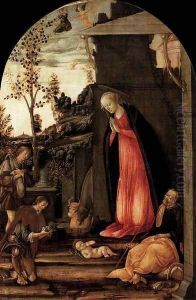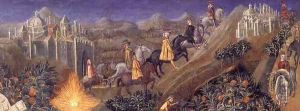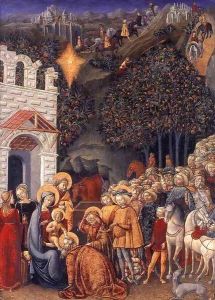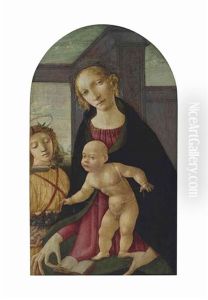Michele Ciampanti Paintings
Michele Ciampanti, sometimes also referred to as Michele di Rodolfo, was an Italian painter of the Quattrocento period, which refers to the 15th century in Italian art and culture. Born in 1440, Ciampanti was active primarily in Lucca, a city in Tuscany, Italy. There is not a wealth of information available on his life, as with many artists of the time, and much of his biography is pieced together from the works he left behind and the sparse historical records of the era.
Ciampanti’s works are considered to be in the late Gothic style, and he was influenced by both the innovative techniques of the Renaissance and the traditions of Gothic art. His paintings often feature religious themes, which was typical of the period, as the church was a primary patron of the arts.
Throughout his career, Michele Ciampanti was known for his altarpieces and frescoes. One of his notable works is the altarpiece in the Church of San Frediano in Lucca, which he completed in 1482. This piece is characteristic of his style, with elongated figures and a meticulous attention to detail. His works are important in understanding the transition between the Medieval and Renaissance periods in Italian art, especially in the regions less influenced by the leading artistic centers of Florence and Rome.
Michele Ciampanti passed away in 1504. While he may not be as well-known as the titans of the Renaissance, his contributions to Italian art are recognized by art historians who study the period. His paintings offer insights into the stylistic transitions of the time and reflect the local artistic tendencies of Lucca in the late 15th century.



